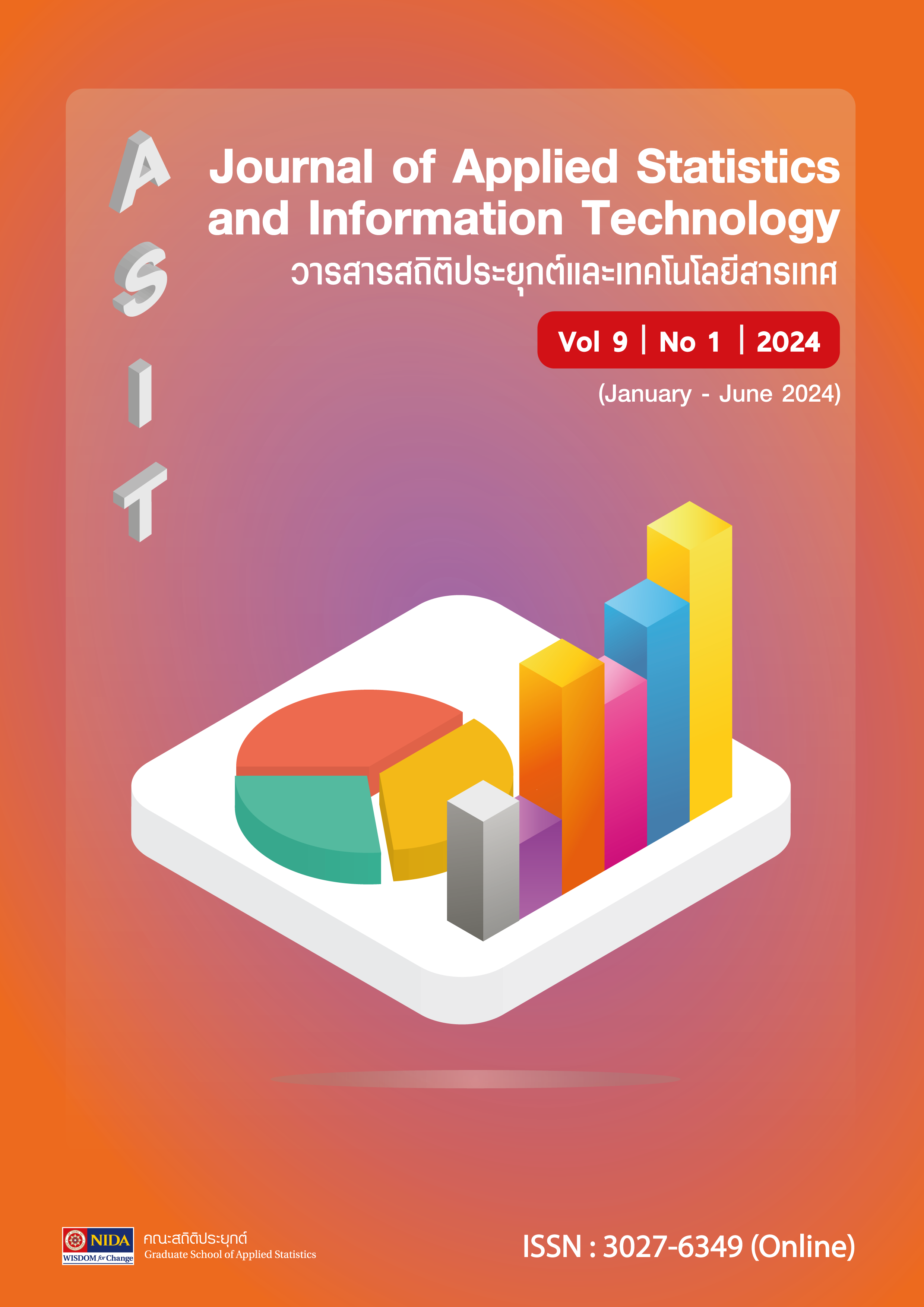A negative binomial Erlang-Lindley distribution with applications
Keywords:
negative binomial distribution, Erlang-Lindley distribution, Count data, Maximum likelihood estimation, overdispersionAbstract
In this paper, a new three-parameter negative binomial distribution obtained by mixing the negative binomial distribution and the two-parameter Erlang-Lindley distribution is introduced for modeling count data. Its probability mass function, factorial moment, mean, variance, and index of dispersion have been obtained and discussed. Estimation of the parameters is illustrated using the maximum likelihood method, and the usefulness of the proposed distribution is explained as examples of real data sets, which show that the proposed distribution provides a better fit than the Poisson, negative binomial, and negative binomial-Lindley distributions.
References
Abd El-Monsef, M. M. E., Hassanein, W. A., N. M. Kilany. (2016). Erlang-Lindley Distribution, Communications in Statistics - Theory and Methods, DOI: 10.1080/03610926.2016.1212069.
Aryuyuen, S. and U. Tonggumnead. (2022). Bayesian Inference for the Negative Binomial-Quasi Lindley Model for Time Series Count Data on the COVID-19 Pandemic. 19(21).
Aryuyuen, S. and W. Bodhisuwan. (2013). The negative binomial - generalized exponential distribution. Applied Mathematical Sciences. 7 (22): 1093–1105.
Cox D.R. and P.A.W. Lewis. The Statistical Analysis of Series of Events. Ann. Math. Statist. 37(6): 1852-1853
Flynn, M. (2009). More flexible GLMs zero - inflated models and hybrid models. Casualty Actuarial Society E-Forum, Winter
Gomez, D., J. Sarabia and E. Calder. (2008). Univariate and multivariate versions of the negative binomial - inverse Gaussian distributions with applications. Insurance: Mathematics and Economics. 42 (1): 39–49.
Klugman, S., H. Panjer and G. Willmot. (2008). Loss Models: from Data to Decisions. 3rd ed. John Wiley and Sons.
Korolev V.Y. and I.Z. Alexander. (2019). Generalized negative binomial distributions as mixed geometric laws and related limit theorems. Lithuanian Mathematical Journal. 59: 366–388.
Samutwachirawong, S. (2017). A negative binomial-new weighted Lindley distribution for count data and its application to hospitalized patients with diabetes at Ratchaburi hospital, Thailand, in Proceedings of the 2nd International Conference of Multidisciplinary Approaches on UN Sustainable Development Goals (UNSDGs), Bangkok, Thailand, 28–29 December 2017, 25–32.
Zamani, H., Ismail, N., & Faroughi, P. (2014). Poisson-Weighted Exponential Univariate Version and Regression Model with Applications. Journal of Mathematics and Statistics, 10(2), 148–154.
Downloads
Published
How to Cite
Issue
Section
License
Copyright (c) 2024 Journal of Applied Statistics and Information Technology

This work is licensed under a Creative Commons Attribution-NonCommercial-NoDerivatives 4.0 International License.
เนื้อหาและข้อมูลที่ปรากฏในบทความที่ตีพิมพ์ในวารสารสถิติประยุกต์และเทคโนโลยีสารสนเทศถือเป็นความคิดเห็นส่วนบุคคลของผู้เขียนแต่ละท่าน ความผิดพลาดของข้อความและผลที่อาจเกิดจากนำข้อความเหล่านั้นไปใช้ผู้เขียนบทความจะเป็นผู้รับผิดชอบแต่เพียงผู้เดียว บทความ ข้อมูล เนื้อหา รูปภาพ ฯลฯ ที่ได้รับการตีพิมพ์ในวารสารถือเป็นลิขสิทธิ์ของวารสาร หากบุคคลหรือหน่วยงานใดต้องการนำทั้งหมดหรือส่วนหนึ่งส่วนใดไปเผยแพร่ต่อหรือเพื่อกระทำการใดๆ จะต้องได้รับอนุญาตเป็นลายลักอักษรณ์จากวารสาร ก่อนเท่านั้น



